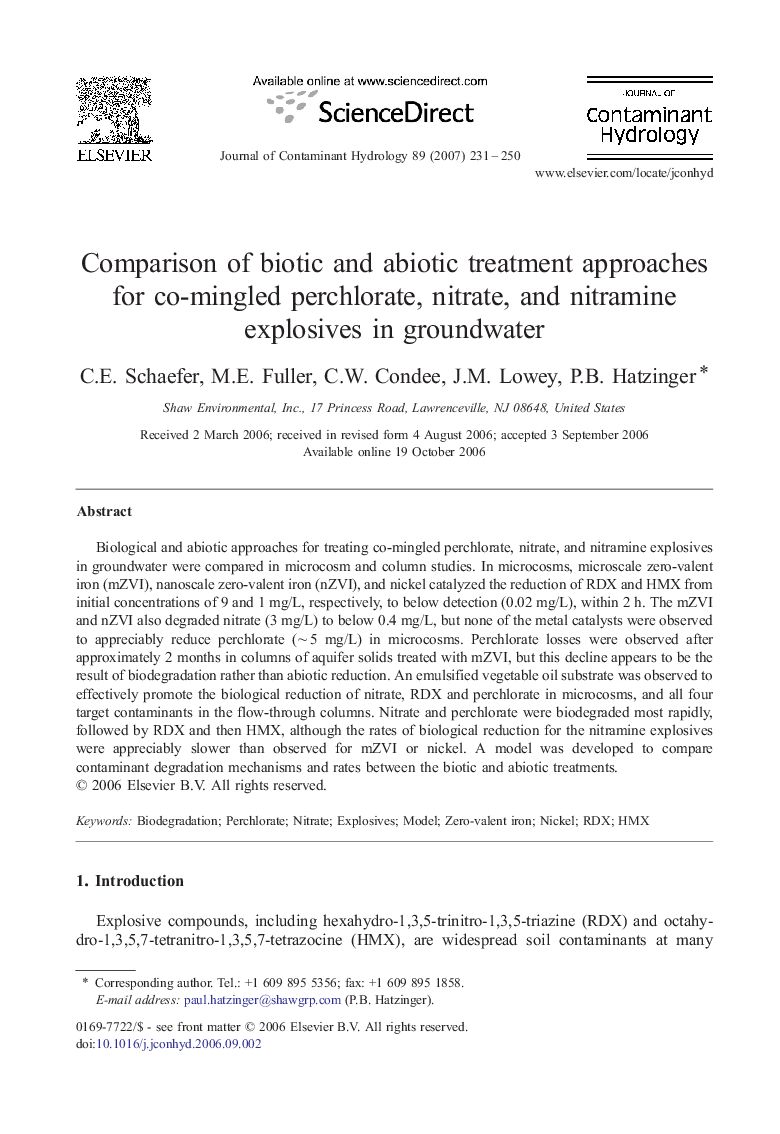| Article ID | Journal | Published Year | Pages | File Type |
|---|---|---|---|---|
| 4547681 | Journal of Contaminant Hydrology | 2007 | 20 Pages |
Biological and abiotic approaches for treating co-mingled perchlorate, nitrate, and nitramine explosives in groundwater were compared in microcosm and column studies. In microcosms, microscale zero-valent iron (mZVI), nanoscale zero-valent iron (nZVI), and nickel catalyzed the reduction of RDX and HMX from initial concentrations of 9 and 1 mg/L, respectively, to below detection (0.02 mg/L), within 2 h. The mZVI and nZVI also degraded nitrate (3 mg/L) to below 0.4 mg/L, but none of the metal catalysts were observed to appreciably reduce perchlorate (∼ 5 mg/L) in microcosms. Perchlorate losses were observed after approximately 2 months in columns of aquifer solids treated with mZVI, but this decline appears to be the result of biodegradation rather than abiotic reduction. An emulsified vegetable oil substrate was observed to effectively promote the biological reduction of nitrate, RDX and perchlorate in microcosms, and all four target contaminants in the flow-through columns. Nitrate and perchlorate were biodegraded most rapidly, followed by RDX and then HMX, although the rates of biological reduction for the nitramine explosives were appreciably slower than observed for mZVI or nickel. A model was developed to compare contaminant degradation mechanisms and rates between the biotic and abiotic treatments.
